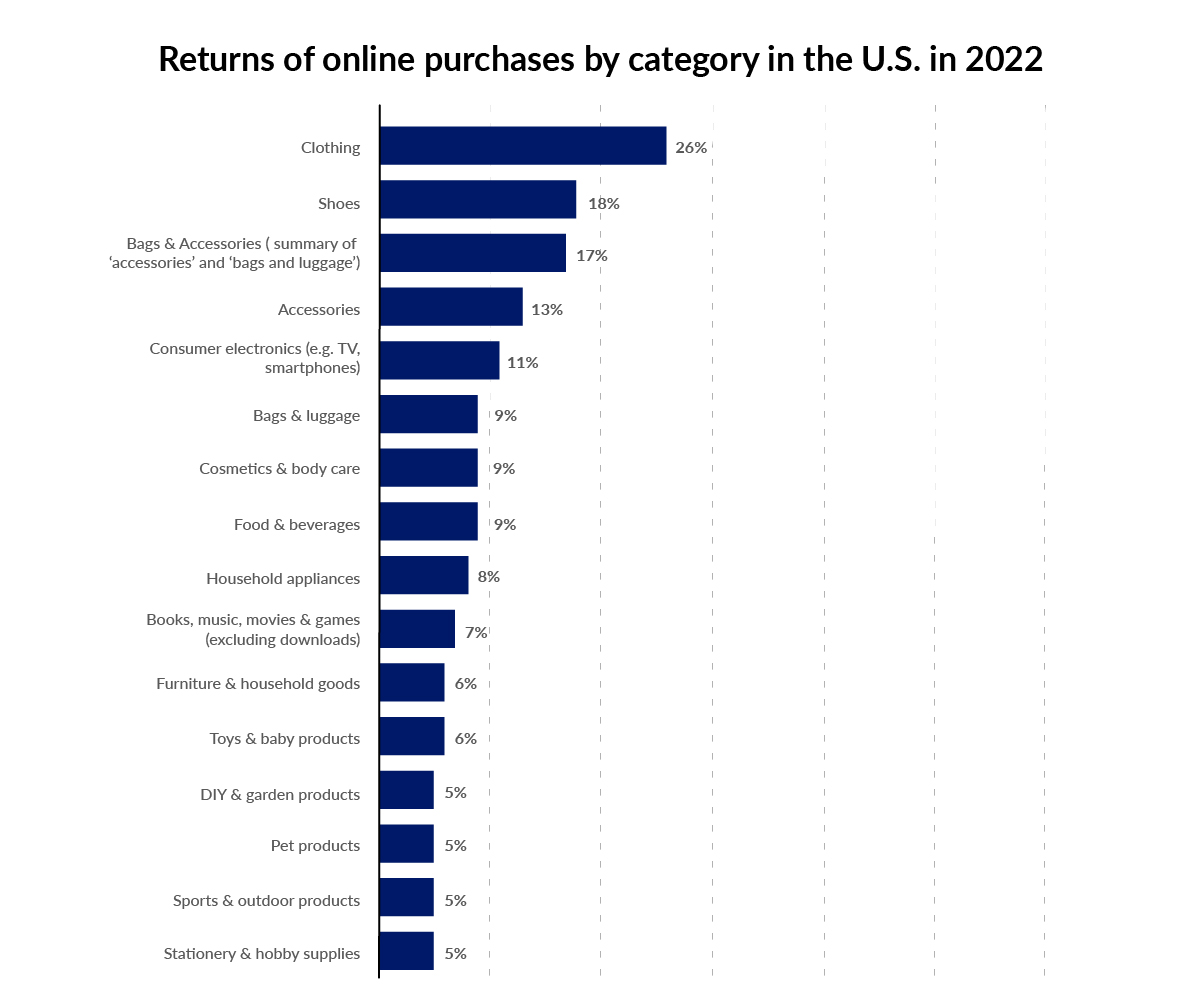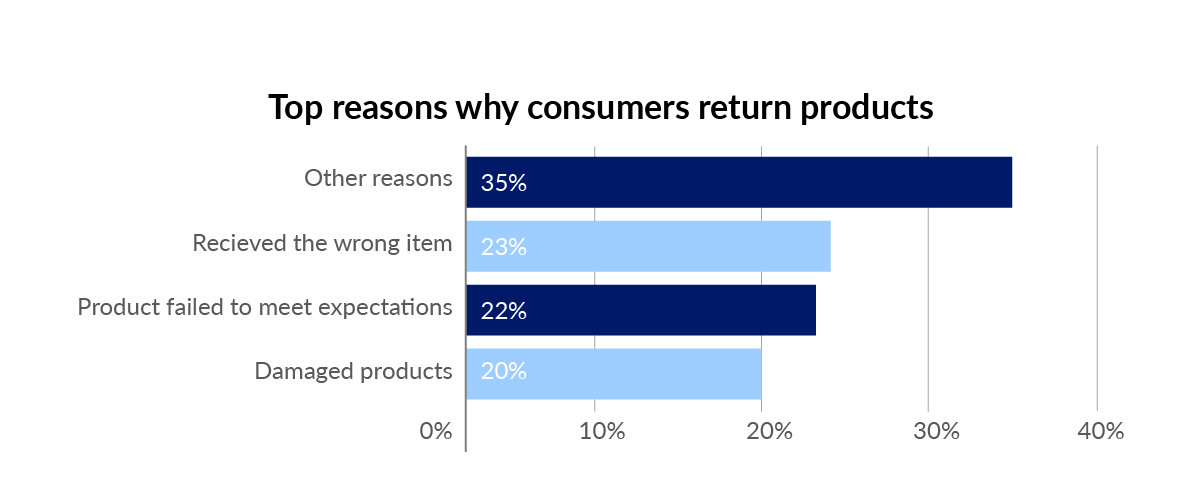The Shipwire Blog
News and expert insights on global fulfillment and technology.

While the popularity of ecommerce shopping continues to grow globally, brands and retailers are grappling with high return rates and the struggle to logistically and financially manage them. According to the National Retail Federation, 17% of the total merchandise purchased online in 2022 was returned. This accounted for $816M. In other words, for every $1B in sales retailers made online, they absorbed $165M in costs for returns received.
Holiday returns in particular are crushing brands and retailers, with returns rising by 57% from 2021 (Retail Dive) and consumers returning approximately $1.4B in the 2022 holiday season (Salesforce). Data suggests that 20% of ecommerce purchased products are returned, compared to just 9% of products bought in a brick-and-mortar store according to Shopify.
Return Rates by Product Type
Return rates vary drastically by product type, thus impacting some brands and retailers more than others. Clothing and apparel yield the highest return rate of any category as consumers often order multiple sizes, colors, and styles due to the lack of trying on the product before purchasing. Below are the return rates by product category for the United States in 2022 according to Statista. To calculate your ecommerce return rate, simply divide the number of returned items by the total number of sold items and multiply by 100.

Why the High Return Rates?
Ecommerce consumers continue to evolve from their desire for fast and free shipping to now demanding easy and free returns policies. To be competitive in today’s market, brands and retailers are revisiting their returns policies to include free returns, extended return windows, and a variety of returns methods, such as in-store, mail, returns bars, drop-off locations, etc. An inconvenient return experience has repercussions for businesses with approximately 73% of online shoppers indicating that the return experience affects their choice to purchase from a retailer again (Supply Chain Digital).
According to Invespcro, the top reasons consumers return products are:

While overall annual ecommerce return rates are stabilizing at about 16.5% in 2021 and 2022, it’s still a big issue for many companies. From setting up returns policies, returns logistics and storage, processing products back into inventory for sales, redistribution, etc, returns logistics are so important for the ongoing success of any ecommerce company. Working with a strong fulfillment partner can make all the difference when it comes to returns management cost savings and the customer experience! Shipwire, a CEVA Logistics Company, specializes in ecommerce fulfillment solutions, including returns management to help your company grow and thrive in this new ecommerce environment.
Our Tips to Reduce Ecommerce Returns
- Improve your product descriptions and imagery
- Add virtual try-on tools or fitting guides for applicable products – hello AI!
- Offer immediate refunds and fast exchanges to encourage exchanges vs returns
- Improve packaging to reduce damaged products
- Automate fulfillment operations to reduce errors – we’re experts in this!
- Create an attractive returns policy
- Analyze and incorporate customer reviews for visibility
Improve Your Returns Logistics
Shipwire partners with Happy Returns which means that we have the operational procedures, technology, and expertise to ensure you turn your returns into resale opportunities while maintaining brand integrity. By teaming up with Happy Returns, we’re able to create the best customer experience when it comes to returns, including ease of initiating and completing returns, eco-friendly packaging, and cost savings for your business.
We’d love to learn more about your business and show you the power of a professional fulfillment partnership. Let’s connect and see how Shipwire can help your business grow.


